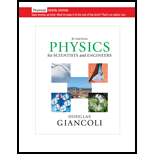
Pearson eText -- Physics for Scientists and Engineers with Modern Physics -- Instant Access (Pearson+)
5th Edition
ISBN: 9780137488179
Author: Douglas Giancoli
Publisher: PEARSON+
expand_more
expand_more
format_list_bulleted
Concept explainers
Textbook Question
Chapter 18, Problem 7P
(I) A 1.0-mol sample of hydrogen gas has a temperature of 27°C. (a) What is the total kinetic energy of all the gas molecules in the sample? (b) How fast would a 65-kg person have to run to have the same kinetic energy?
Expert Solution & Answer
Want to see the full answer?
Check out a sample textbook solution
Students have asked these similar questions
Answer the assignment 2 question and show step-by-step solution. This is from Chapter 6 from the book, "The Essential Cosmic Perspective" 8th edition by Bennett, Donahue, Schneider, Voit. I provided some helpful notes to help with the solution.
Answer the assignment 1 question and show step-by-step solution. This is from Chapter 6 from the book, "The Essential Cosmic Perspective" 8th edition by Bennett, Donahue, Schneider, Voit. I provided some helpful notes to help with the solution.
Pls help ASAP on both
Chapter 18 Solutions
Pearson eText -- Physics for Scientists and Engineers with Modern Physics -- Instant Access (Pearson+)
Ch. 18.1 - Prob. 1AECh. 18.1 - Prob. 1BECh. 18.1 - Prob. 1CECh. 18.1 - Prob. 1DECh. 18.4 - Prob. 1EECh. 18 - Why doesnt the size of different molecules enter...Ch. 18 - When a gas is rapidly compressed (say, by pushing...Ch. 18 - In Section 181 we assumed the gas molecules made...Ch. 18 - Explain in words how Charless law follows from...Ch. 18 - Prob. 5Q
Ch. 18 - As you go higher in the Earths atmosphere, the...Ch. 18 - Prob. 7QCh. 18 - Explain why the peak of the curve for 310 K in...Ch. 18 - Is temperature a macroscopic or microscopic...Ch. 18 - Escape velocity for the Earth refers to the...Ch. 18 - Prob. 11QCh. 18 - If the pressure in a gas is doubled while its...Ch. 18 - What everyday observation would tell you that not...Ch. 18 - Alcohol evaporates more quickly than water at room...Ch. 18 - Explain why a hot humid day is far more...Ch. 18 - Is it possible to boil water at room temperature...Ch. 18 - What exactly does it mean when we say that oxygen...Ch. 18 - A length of thin wire is placed over a block of...Ch. 18 - Consider two days when the air temperature is the...Ch. 18 - (a) Why does food cook faster in a pressure...Ch. 18 - How do a gas and a vapor differ?Ch. 18 - (a) At suitable temperatures and pressures, can...Ch. 18 - Why does dry ice not last long at room...Ch. 18 - Under what conditions can liquid CO2 exist? Be...Ch. 18 - Why does exhaled air appear as a little white...Ch. 18 - Prob. 26QCh. 18 - Prob. 27QCh. 18 - Prob. 1MCQCh. 18 - Prob. 2MCQCh. 18 - Prob. 3MCQCh. 18 - Prob. 4MCQCh. 18 - Prob. 5MCQCh. 18 - Prob. 6MCQCh. 18 - Prob. 7MCQCh. 18 - Prob. 8MCQCh. 18 - Prob. 9MCQCh. 18 - Prob. 10MCQCh. 18 - Prob. 1PCh. 18 - Prob. 2PCh. 18 - Prob. 3PCh. 18 - Prob. 4PCh. 18 - Prob. 5PCh. 18 - Prob. 6PCh. 18 - (I) A 1.0-mol sample of hydrogen gas has a...Ch. 18 - Prob. 8PCh. 18 - Prob. 9PCh. 18 - Prob. 10PCh. 18 - Prob. 11PCh. 18 - Prob. 12PCh. 18 - Prob. 13PCh. 18 - Prob. 14PCh. 18 - Prob. 15PCh. 18 - Prob. 16PCh. 18 - Prob. 17PCh. 18 - Prob. 18PCh. 18 - Prob. 19PCh. 18 - (I) A group of 25 particles have the following...Ch. 18 - Prob. 21PCh. 18 - Prob. 22PCh. 18 - Prob. 24PCh. 18 - (I) (a) At atmospheric pressure, in what phases...Ch. 18 - Prob. 26PCh. 18 - Prob. 27PCh. 18 - Prob. 28PCh. 18 - Prob. 29PCh. 18 - Prob. 30PCh. 18 - Prob. 31PCh. 18 - Prob. 32PCh. 18 - (II) A pressure cooker is a sealed pot designed to...Ch. 18 - Prob. 34PCh. 18 - Prob. 35PCh. 18 - Prob. 36PCh. 18 - Prob. 37PCh. 18 - Prob. 38PCh. 18 - Prob. 39PCh. 18 - Prob. 40PCh. 18 - Prob. 41PCh. 18 - Prob. 42PCh. 18 - Prob. 43PCh. 18 - Prob. 44PCh. 18 - Prob. 45PCh. 18 - Prob. 46PCh. 18 - Prob. 47PCh. 18 - Prob. 49PCh. 18 - Prob. 53PCh. 18 - A sample of ideal gas must contain at least N =...Ch. 18 - In outer space the density of matter is about one...Ch. 18 - Calculate approximately the total translational...Ch. 18 - (a) Estimate the rms speed of an amino acid, whose...Ch. 18 - The escape speed from the Earth is 1.12 104 m/s,...Ch. 18 - Prob. 63GPCh. 18 - Prob. 66GPCh. 18 - Prob. 69GPCh. 18 - Prob. 71GPCh. 18 - Prob. 72GPCh. 18 - Prob. 73GPCh. 18 - Prob. 74GPCh. 18 - Prob. 75GPCh. 18 - Prob. 76GPCh. 18 - Prob. 77GP
Additional Science Textbook Solutions
Find more solutions based on key concepts
Your bore cells, muscle cells, and skin cells look different because a. different kinds of genes are present in...
Campbell Essential Biology (7th Edition)
10.71 Identify each of the following as an acid or a base: (10.1)
H2SO4
RbOH
Ca(OH)2
HI
...
Chemistry: An Introduction to General, Organic, and Biological Chemistry (13th Edition)
APPLY 1.2 Express the following quantities in scientific notation
using fundamental SI units of mass and lengt...
Chemistry (7th Edition)
Where is transitional epithelium found and what is its importance at those sites?
Anatomy & Physiology (6th Edition)
Why is an endospore called a resting structure? Of what advantage is an endospore to a bacterial cell?
Microbiology: An Introduction
47. A block hangs in equilibrium from a vertical spring. When a second identical block is added, the original ...
Physics for Scientists and Engineers: A Strategic Approach, Vol. 1 (Chs 1-21) (4th Edition)
Knowledge Booster
Learn more about
Need a deep-dive on the concept behind this application? Look no further. Learn more about this topic, physics and related others by exploring similar questions and additional content below.Similar questions
- Question 16 A square plate has a side length of 1.20m. A 24.0- N'm torque is applied about an axis perpendicular to the plate through its centre. If it experiences an angular acceleration of 6.25rad/s², calculate the mass of the plate. Question 17 A light string is wrapped around a solid cylinder, and a block of mass m = 100g hangs from the free end of the string, as shown Figure A2.17. When released, the block falls a distance of 1.0m in 2.0s. a. Draw free-body (or force) diagrams for the block and the cylinder. b. Calculate the tension in the string. c. Determine the mass (M) of the cylinder.arrow_forwardPls help ASAP on botharrow_forwardPls help ASAP on botharrow_forward
- Question 7 A box slides on a smooth (frictionless) horizontal surface, 1.5m above the floor, at a speed of 2.0m/s, as shown in Figure A2.07. The box then slides down a ramp that makes an angle of 36° with the horizontal and has a coefficient of kinetic friction equal to 0.43. After reaching the end of the ramp, the box continues to slide horizontally on the smooth floor. Use the law of conservation of energy to calculate the final speed (v) of the box.arrow_forwardQuestion 3 Three lead spheres, of mass 10kg each, are located at three corners of a square of side length 45cm, as shown in Figure A2.03. A bead is released at the forth corner. By considering the gravitational forces among the four objects only, determine the magnitude and direction of the acceleration of the bead when released.arrow_forwardPls help ASAP on botharrow_forward
- Pls help ASAP on botharrow_forwardPls help ASAP on botharrow_forwardAnswer the assignment 4 question and show step-by-step solution. This is from Chapter 5 from the book, "The Essential Cosmic Perspective" 8th edition by Bennett, Donahue, Schneider, Voit. I provided some helpful notes to help with the solution.arrow_forward
- Answer the assignment 3 question and show step-by-step solution. This is from Chapter 5 from the book, "The Essential Cosmic Perspective" 8th edition by Bennett, Donahue, Schneider, Voit. I provided some helpful notes to help with the solution.arrow_forwardAnswer the assignment 2 question and show step-by-step solution. This is from Chapter 5 from the book, "The Essential Cosmic Perspective" 8th edition by Bennett, Donahue, Schneider, Voit. I provided some helpful notes to help with the solution.arrow_forwardAnswer the assignment 1 question and show step-by-step solution. This is from Chapter 5 from the book, "The Essential Cosmic Perspective" 8th edition by Bennett, Donahue, Schneider, Voit. I provided some helpful notes to help with the solution.arrow_forward
arrow_back_ios
SEE MORE QUESTIONS
arrow_forward_ios
Recommended textbooks for you
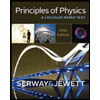 Principles of Physics: A Calculus-Based TextPhysicsISBN:9781133104261Author:Raymond A. Serway, John W. JewettPublisher:Cengage Learning
Principles of Physics: A Calculus-Based TextPhysicsISBN:9781133104261Author:Raymond A. Serway, John W. JewettPublisher:Cengage Learning Physics for Scientists and Engineers, Technology ...PhysicsISBN:9781305116399Author:Raymond A. Serway, John W. JewettPublisher:Cengage Learning
Physics for Scientists and Engineers, Technology ...PhysicsISBN:9781305116399Author:Raymond A. Serway, John W. JewettPublisher:Cengage Learning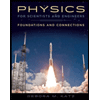 Physics for Scientists and Engineers: Foundations...PhysicsISBN:9781133939146Author:Katz, Debora M.Publisher:Cengage Learning
Physics for Scientists and Engineers: Foundations...PhysicsISBN:9781133939146Author:Katz, Debora M.Publisher:Cengage Learning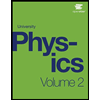
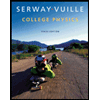 College PhysicsPhysicsISBN:9781285737027Author:Raymond A. Serway, Chris VuillePublisher:Cengage Learning
College PhysicsPhysicsISBN:9781285737027Author:Raymond A. Serway, Chris VuillePublisher:Cengage Learning College PhysicsPhysicsISBN:9781305952300Author:Raymond A. Serway, Chris VuillePublisher:Cengage Learning
College PhysicsPhysicsISBN:9781305952300Author:Raymond A. Serway, Chris VuillePublisher:Cengage Learning

Principles of Physics: A Calculus-Based Text
Physics
ISBN:9781133104261
Author:Raymond A. Serway, John W. Jewett
Publisher:Cengage Learning

Physics for Scientists and Engineers, Technology ...
Physics
ISBN:9781305116399
Author:Raymond A. Serway, John W. Jewett
Publisher:Cengage Learning

Physics for Scientists and Engineers: Foundations...
Physics
ISBN:9781133939146
Author:Katz, Debora M.
Publisher:Cengage Learning


College Physics
Physics
ISBN:9781285737027
Author:Raymond A. Serway, Chris Vuille
Publisher:Cengage Learning

College Physics
Physics
ISBN:9781305952300
Author:Raymond A. Serway, Chris Vuille
Publisher:Cengage Learning
Kinetic Molecular Theory and its Postulates; Author: Professor Dave Explains;https://www.youtube.com/watch?v=o3f_VJ87Df0;License: Standard YouTube License, CC-BY